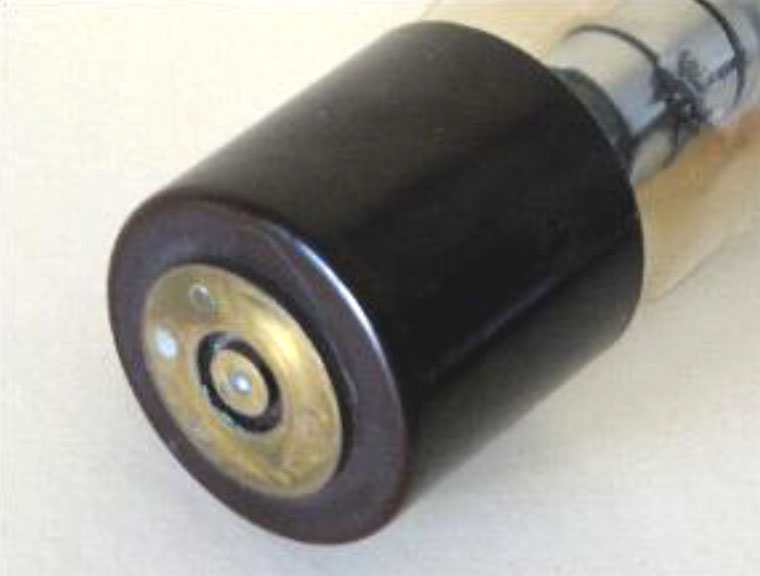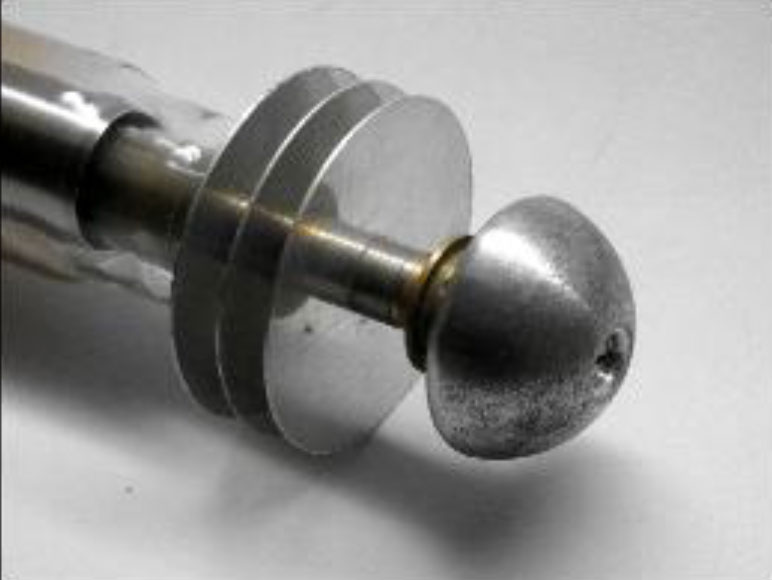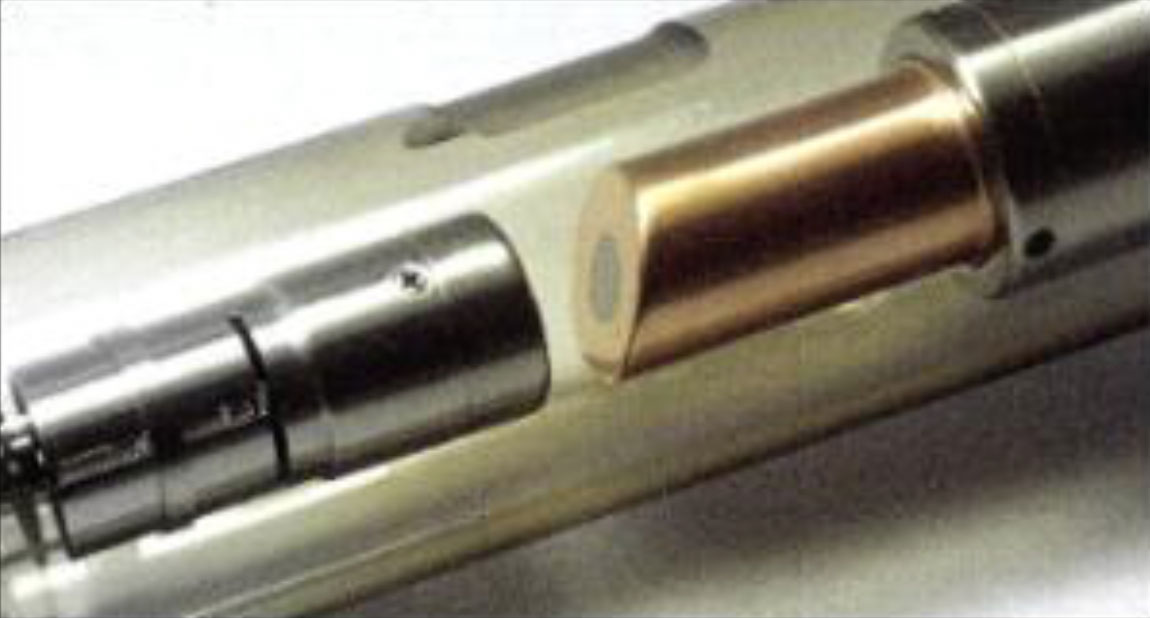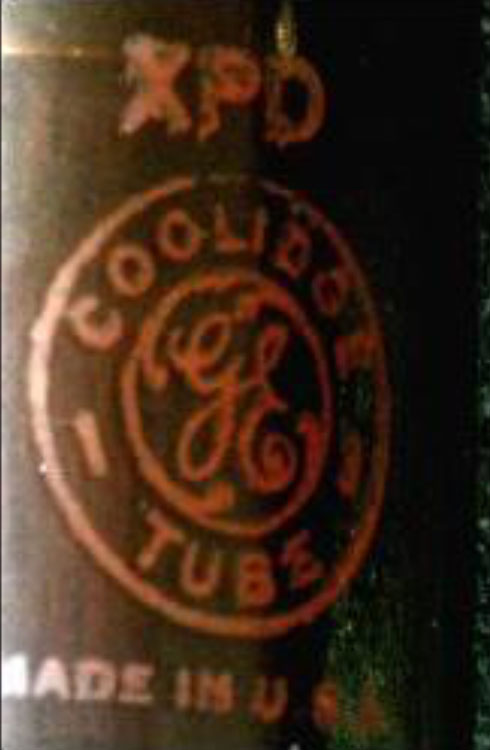XPD Tube by G.E.
Ref. D3
This 10” (25 cm) air-cooled single focus tube, of the line focus design, dates probably to the mid or late thirties, or early forties. With a “P” in the designation, it falls in the category of “Protected” air-cooled tubes, such as the “CYR” tube by Machlett, the 6-100P tube by Eureka, and the Metalix tube by Philips.




This tube was probably mainly intended for dental radiography (with “D” in the designation). It was installed in an appropriate protective housing and fitted at its anode end with a peculiar cooling device consisting of three aluminium discs in conjunction with a rather small hemispheric aluminium heat sink.
The focal spot on the tungsten target is hardly visible and of a size probably not exceeding one millimetre square.
An XPD tube in its protective housing and its dental cone.